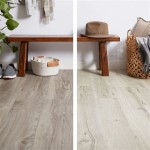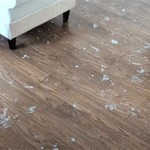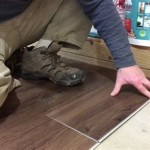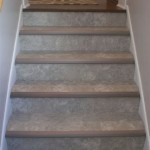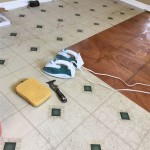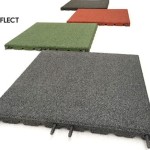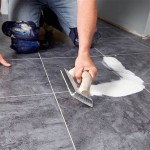Does Double-Sided Carpet Tape Ruin Hardwood Floors In House?
The question of whether double-sided carpet tape ruins hardwood floors is a common concern for homeowners seeking to secure rugs and carpets in their houses. Hardwood floors are a significant investment, prized for their beauty, durability, and value. Protecting them from damage is paramount. Double-sided carpet tape is often seen as a convenient solution for preventing rugs from slipping and potentially causing accidents. However, the adhesive properties of this type of tape can pose a risk to the finish and even the wood itself. This article will delve into the potential damage that double-sided carpet tape can inflict on hardwood floors, examining the types of tape available, the factors that contribute to damage, and precautions that can be taken to minimize risk.
The primary concern with double-sided carpet tape on hardwood floors revolves around the adhesive. The tape is designed to create a strong bond between the rug or carpet and the floor surface. While this bond is effective in preventing slippage, it can also be problematic when the time comes to remove the tape. The adhesive can leave a residue on the hardwood floor, which can be difficult to remove. In some cases, the adhesive can even pull up the finish of the floor, resulting in discoloration or complete removal of the protective layer. Furthermore, certain types of tape can react negatively with the floor's finish, causing it to soften or become sticky.
The extent of the damage caused by double-sided carpet tape depends on a variety of factors. These factors include the type of tape used, the type of finish on the hardwood floor, the length of time the tape has been applied, and the method used to remove the tape. Certain types of tape are more aggressive than others, and some finishes are more susceptible to damage from adhesives. Understanding these factors is crucial for making informed decisions about using double-sided carpet tape on hardwood floors.
Types of Double-Sided Carpet Tape and Their Potential Impact
Double-sided carpet tape is not a uniform product; various types are available, each with different adhesive properties and intended uses. The type of tape selected can significantly influence the potential for damage to a hardwood floor. Understanding the characteristics of different types of tape is therefore essential.
Acrylic-based tapes are a common type of double-sided carpet tape. These tapes are generally considered to be less aggressive than rubber-based tapes. They rely on a synthetic adhesive that provides a strong, yet relatively removable bond. Acrylic tapes are often recommended for use on delicate surfaces, including certain types of hardwood floors. However, even acrylic tapes can leave a residue behind, especially if they are left in place for an extended period. The residue can attract dirt and grime, making it difficult to clean and potentially causing discoloration of the floor.
Rubber-based tapes, on the other hand, are known for their aggressive adhesive qualities. These tapes utilize a natural or synthetic rubber adhesive that creates a very strong bond. While this strong bond is advantageous for securing heavy rugs or carpets, it also increases the risk of damage to the hardwood floor. Rubber-based tapes are more likely to pull up the finish of the floor upon removal. They are also more prone to leaving behind a sticky residue that is difficult to remove. Due to their aggressive nature, rubber-based tapes are generally not recommended for use on hardwood floors.
Gel-based tapes represent a newer category of double-sided adhesives. These tapes utilize a gel-like adhesive that is designed to provide a strong hold while also being removable. Gel-based tapes often claim to be residue-free and safe for use on sensitive surfaces. However, it is important to note that the performance of gel-based tapes can vary depending on the specific product and the type of surface they are applied to. It is always recommended to test a small, inconspicuous area of the hardwood floor before applying gel-based tape to a larger area.
In addition to the type of adhesive, the thickness of the tape can also impact its potential for damage. Thicker tapes tend to contain more adhesive, which can increase the risk of residue and finish damage. Thinner tapes, on the other hand, may not provide as strong of a hold, but they are generally less likely to cause damage upon removal.
Factors Influencing Damage to Hardwood Floors
Several factors beyond the type of tape itself contribute to the potential for damage when using double-sided carpet tape on hardwood floors. These factors include the type of hardwood floor finish, the duration the tape is applied, environmental conditions, and the removal process. Understanding these variables is crucial for minimizing risk.
The type of finish on the hardwood floor plays a significant role in its susceptibility to damage from double-sided carpet tape. Surface finishes, such as polyurethane, create a protective layer over the wood. However, these finishes can still be vulnerable to adhesives. Older finishes, especially those that are worn or damaged, are more likely to be affected by the tape. Penetrating finishes, such as oil-based finishes, soak into the wood rather than forming a protective layer on top. These finishes are generally more resistant to damage from adhesives, but they can still be affected by residue.
The duration the tape is applied is another critical factor. The longer the tape remains in place, the stronger the bond becomes. This is because the adhesive has more time to penetrate the finish and adhere to the wood. Over time, the adhesive can also dry out and become more brittle, making it more difficult to remove without causing damage. Leaving the tape in place for extended periods significantly increases the risk of residue and finish damage.
Environmental conditions, such as temperature and humidity, can also impact the performance of double-sided carpet tape and its potential for damage. High temperatures can cause the adhesive to soften and become more sticky, increasing the likelihood of residue. High humidity can weaken the bond between the tape and the floor, but it can also affect the adhesive's properties, making it more difficult to remove cleanly. Maintaining a stable temperature and humidity level can help to minimize these effects.
The removal process is perhaps the most critical factor in determining whether double-sided carpet tape will damage a hardwood floor. Improper removal techniques can easily lead to finish damage or residue. Attempting to simply pull the tape off quickly can tear the finish or leave behind a significant amount of adhesive. A slow, careful removal process, combined with appropriate solvents or heat, is essential for minimizing risk.
Precautions to Minimize Risk of Damage
While double-sided carpet tape can pose a risk to hardwood floors, there are precautions that can be taken to minimize the potential for damage. These precautions include selecting the right type of tape, preparing the floor surface, applying the tape correctly, and removing the tape carefully. Following these guidelines can help to protect your hardwood floors while still enjoying the benefits of using carpet tape.
Choosing the right type of tape is the first and most important step. Opt for tapes specifically designed for use on delicate surfaces, such as hardwood floors. Look for tapes that are labeled as residue-free or removable. Avoid using rubber-based tapes, as they are generally too aggressive for hardwood floors. Acrylic-based tapes and some gel-based tapes are often better choices. Always test the tape on a small, inconspicuous area of the floor before applying it to a larger area. This will allow you to assess its adhesion and removability without risking widespread damage.
Proper preparation of the floor surface is also crucial. Before applying the tape, clean the floor thoroughly to remove any dirt, dust, or debris. Use a mild cleaner that is specifically designed for hardwood floors. Avoid using harsh chemicals or abrasive cleaners, as these can damage the finish. Allow the floor to dry completely before applying the tape. A clean, dry surface will ensure a better bond and reduce the risk of residue.
Applying the tape correctly can also help to minimize the risk of damage. Use only the amount of tape necessary to secure the rug or carpet. Avoid overlapping the tape, as this can create a thicker layer of adhesive that is more difficult to remove. Press the tape firmly onto the floor to ensure a good bond. However, avoid applying excessive pressure, as this can damage the finish. Consider using strips of tape around the perimeter of the rug or carpet, rather than covering the entire surface.
Removing the tape carefully is perhaps the most important precaution. Before attempting to remove the tape, consider using a heat source, such as a hairdryer, to soften the adhesive. Apply heat to the tape for a few seconds at a time, being careful not to overheat the floor. Gently peel the tape back at a low angle, working slowly and steadily. If the tape is difficult to remove, try using a solvent specifically designed for removing adhesive residue. Test the solvent on a small, inconspicuous area of the floor before applying it to a larger area. Follow the manufacturer's instructions carefully. Avoid using sharp tools or abrasive cleaners to remove the tape, as these can scratch or damage the finish.
In addition to these precautions, consider using alternative methods for securing rugs and carpets on hardwood floors. Rug pads, for example, can provide cushioning and prevent slippage without the need for adhesive. Some rug pads are designed with a non-slip backing that grips the floor without damaging the finish. Furniture placement can also help to secure rugs and carpets. Placing heavy furniture, such as sofas or chairs, on the edges of the rug can help to prevent it from moving.

Pros And Cons Of Applying Rug Tape On Your Floors Carpets Rugpadusa

Will Double Sided Carpet Tape Leave A Sticky Residue Or Damage My Floor Tile

Types Features And Specific Uses Of Carpet Tape

Xfasten Double Sided Carpet Tape Heavy Duty 2 X 30 Yds Residue Free For Area Rugs Over Keep Rug In Place Hardwood

Types Features And Specific Uses Of Carpet Tape

How To Remove Double Sided Carpet Tape From A Wood Floor

Xfasten Premium Carpet Tape 2 X 10 Yards 6 Packs Residue Free Rug Adhesive For Hardwood Concrete Tiles More

Roberts Indoor Or Outdoor 15 Ft Double Sided Carpet Tape Roll 50 605 12 The Home

How To Remove Double Sided Carpet Tape From A Wood Floor

Xfasten Double Sided Carpet Tape Heavy Duty 2 X 30 Yds Residue Free For Area Rugs Over Keep Rug In Place Hardwood
See Also
